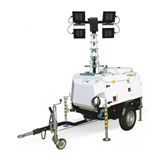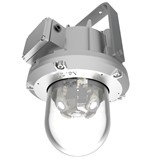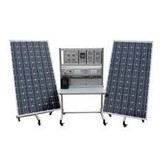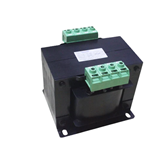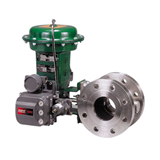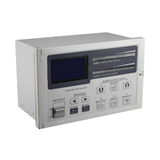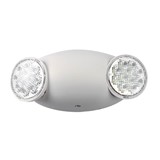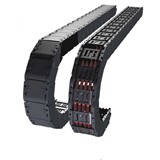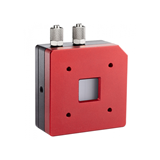Australia's market leader in the manufacture and distribution of soft drinks, Coca-Cola Amatil has six bottling plants and a PET reformation plant in Sydney, as well as PET bottle manufacturing facilities in all states.
Lighting represents a significant cost at all Coca-Cola Amatil sites, accounting for about 15 to 20 per cent of total electricity.
"Introducing new lighting management systems has delivered us substantial energy savings at each of our plants," says Colin Hastwell, Coca-Cola Amatil's senior project engineer.
"Most importantly, we were able to integrate the new lighting controls with our different plants' needs, ensuring that we could achieve optimum performance."
The Lighting Challenge
Originally, Coca-Cola Amatil's factory and warehouse lighting was a "one on, all on" system. To develop the company's Cooperative Agreement, each site developed an individual action plan and lighting projects became a significant area for action.
The sites investigated a range of energy saving opportunities, such as dimming systems, switching systems and the installation of more efficient lamps. Ultimately, the sites made decisions based on their specific requirements for production scheduling, delivery times, skylighting and ambient conditions.
Coca-Cola Amatil's soft drink bottling plant at Kewdale in Western Australia assessed several lighting management systems and chose the Clipsal C-Bus system as the most suitable for its conditions.
The C-Bus system had been installed in many similar industrial environments, and appeared to offer greater potential to expand without requiring substantial extra controlling hardware.
A key concern in the investigation and selection process was the impact the system would have on other equipment warranties. As the C-Bus system did not affect lamp or switch-gear life, it was found not to have a major impact.
Apart from Kewdale, Coca-Cola Amatil has implemented major lighting projects at Richlands in Queensland, Moorabbin in Victoria and Smithfield in NSW. Implementation is planned for Thebarton in South Australia later this year.
Each manufacturing plant undertook similar site-based investigations in developing their action plans, and inspected the Kewdale installation before concluding they would also use the Clipsal system.
Individual Control
The Clipsal C-Bus is a switching system that individually controls each lamp. Every lamp is fitted with a small electronic relay unit and uniquely identified with an individual and group address. These relays are linked with Cat 5 networking cable, so that communications are separate from mains power.
Lamp characteristics are managed via a personal computer remote from the actual fitting. Profiles can be built for each lamp group so that they correspond directly with the requirements of each production line or work area.
Unique Set Up
The set up at each site has several unique characteristics.
At Kewdale, the C-Bus system monitors daylight levels in three locations and enables the continuous dimming of lamps.
The system also allows for further control over lamps that dim or switch frequently due to intermittently changing ambient conditions. To preserve lamp life, a maximum of four changes in light level or switching is allowed in one hour before full lamp output is restored for an extended period.
At Richlands, groups of lamps are controlled to switch off at the end of production. However, if maintenance crews need access to certain areas they can program for that area to switch on for a single shift, after which all lamps automatically switch off.
At Moorabbin, installation of the C-Bus system followed a global lamp replacement in 1998. As part of this upgrade skylights were installed across 15 per cent of the roof, allowing for daylight control in addition to switching capability.
At Smithfield, the C-Bus system is currently being installed in the main manufacturing plant, where a new lighting installation
has recently been completed in the warehouse. The lighting is controlled via several daylight sensors.
The C-Bus system at Kewdale was initially installed with micro-processor controllers providing the controlling 'smarts' of the system. These proved to be inadequate for some of the complex processing required to ensure optimum operation.
A new software controller by Citect was installed - the first example worldwide of such a system - and this has proven to be a successful method of addressing the problem. In addition, a simple and flexible system of programming was written using Citect's programming language, ci-code, as the base code. The Citect controller will now be installed progressively at other sites.
Greenhouse Results
Coca-Cola Amatil is expecting to reduce greenhouse emissions at all sites by more than 2,000 tonnes of CO2 per year, or 1.35 per cent of emissions generated from bottling and beverage packaging.
The company is also achieving cost savings from the C-Bus system.
"Our lighting electricity consumption has dropped by 30 to 40 per cent at all our sites," says Mr Hastwell. "We're now saving between $30,000 to $50,000 per annum at some sites, including our beverage packaging plants."
As the initial cost of the hardware and software ranged between $110,000 to $130,000 for all sites, Coca-Cola Amatil is expecting to recoup its investment within two-and-a-half to four years.
The Department of the Environment and Heritage Australian Greenhouse Office

